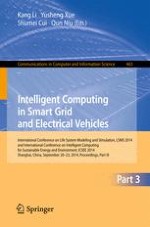This book constitutes the third part of the refereed proceedings of the International Conference on Life System Modeling and Simulation, LSMS 2014, and of the International Conference on Intelligent Computing for Sustainable Energy and Environment, ICSEE 2014, held in Shanghai, China, in September 2014. The 159 revised full papers presented in the three volumes of CCIS 461-463 were carefully reviewed and selected from 572 submissions. The papers of this volume are organized in topical sections on computational intelligence in utilization of clean and renewable energy resources, including fuel cell, hydrogen, solar and winder power, marine and biomass; intelligent modeling, control and supervision for energy saving and pollution reduction; intelligent methods in developing electric vehicles, engines and equipment; intelligent computing and control in distributed power generation systems; intelligent modeling, simulation and control of power electronics and power networks; intelligent road management and electricity marketing strategies; intelligent water treatment and waste management technologies; integration of electric vehicles with smart grid.
